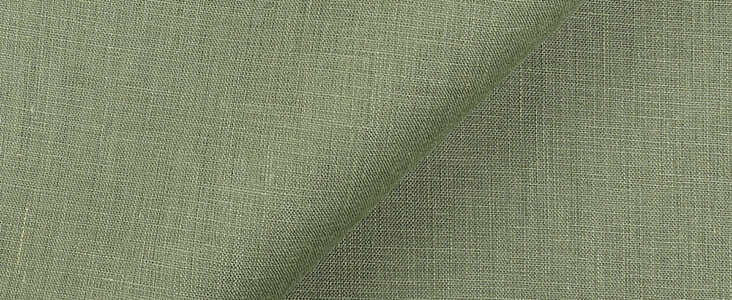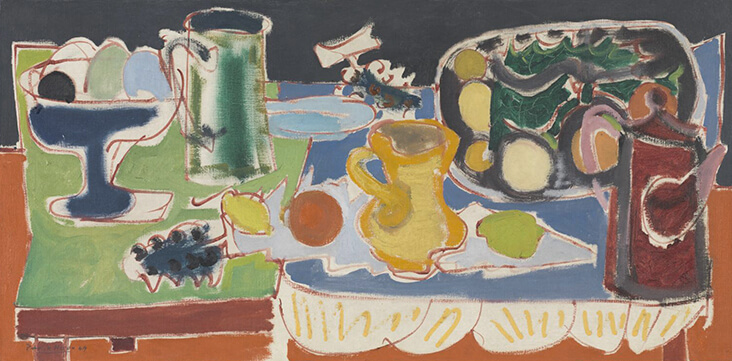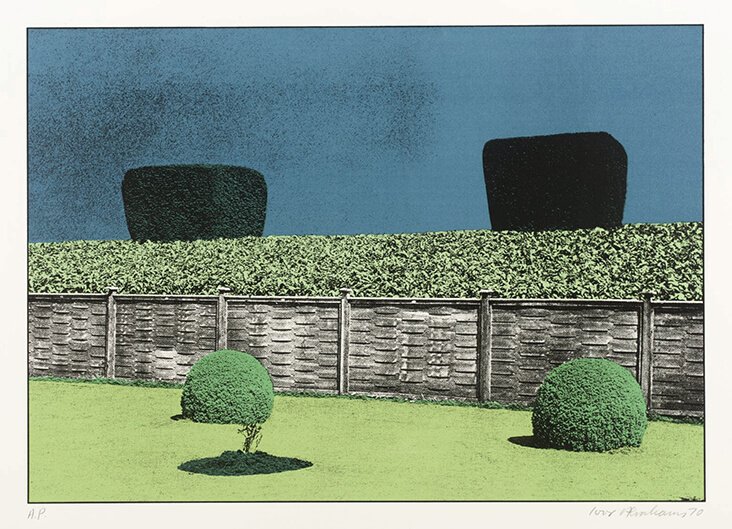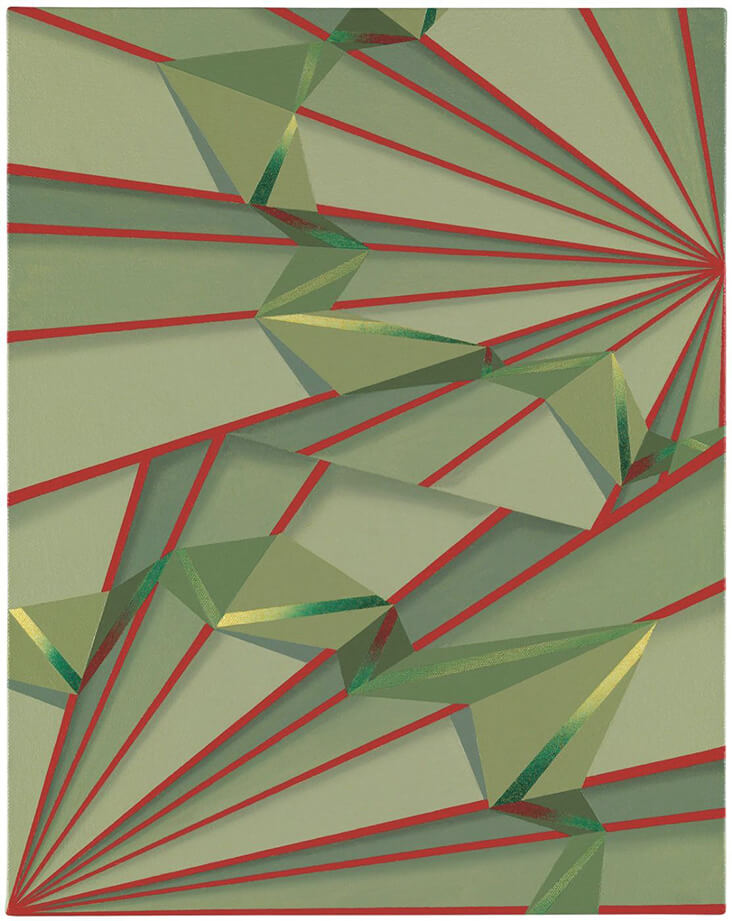Creative Pathways into HEDGE GREEN: Patrick Heron, Ivor Abrahams and Tomma Abts
Cold, calm and fresh, HEDGE GREEN is the colour of fresh summer herbs or sprinkled sunlight catching the tops of trees. Its soft, hazy undertones make this colour a surprisingly versatile choice that can be worked into a range of colour pathways. Next to vivid bright hues it is as cool and fresh as a glass of water, while dark tones make it zesty and bright. We take a closer look at the art of three very different artists – Patrick Heron, Ivor Abrahams and Tomma Abts – who show how this colour can be woven into the most surprising combinations, to create a real feast for the eyes.
Patrick Heron was a leading painter in the Cornish St Ives School throughout the mid to late 20th century. He began his career painting domestic views across tabletops and out of windows with a bold language of abstracted geometry, before moving into a language of pure, expressive abstraction. In Heron’s early career painting, The Long Table with Fruit, 1939 he paints a still life scene with the lively, animated energy of Henri Matisse or Pierre Bonnard. The colourful pottery scattered across the table came from the Leach pottery studio in Cornwall, where Heron once worked. But here the pots are merely a starting point for the artist to veer out into an abstracted field of colour and pattern. He contrasts soft, cold greens with a whole network of other bright, intense hues – reds, blues, oranges and yellows. But when situated next to the unusual, yet visually arresting combinations of burnt orange and navy blue, this mint green becomes the standout colour. In Heron’s later painting Sydney, 9 Feb 1990, 1990, he brings this sharp, cold colour in once again, this time letting it pool into watery passages next to lemon yellow, shocking purple, burnt orange and navy, a medley of candy colours that are as sweet and tasty as summer sorbet.
British artist Ivor Abrahams explored the many possibilities of green throughout his career, through the various mediums of painting, sculpture, ceramics and printmaking. Abrahams was a leading artist in 1950s Britain, one of a generation including Peter Blake, Eduardo Paolozzi and Phillip King who first established Pop art, with its playful regeneration of found imagery. While his contemporaries chose the glamorous, gimmicky worlds of comic books, Hollywood movie stars, magazine adverts and pin-ups as subjects, Abrahams took another approach entirely. He looked instead to the quaint world of the English garden, finding source material in niche gardening magazines including Amateur Gardening, Popular Gardening, and Country Life.
Throughout the 1960s and 1970s Abrahams produced a vast body of work based around the theme of the garden. The screen prints and lithographs he made during this time, featuring bushy shrubs, tidy lawns and ethereal stone pathways and statues, earned Abrahams a widespread following and an international reputation. In Garden Suite V, 1970, Abrahams contrasts crisp shades of light, cold green with the cool, scumbled grey of the fence, and the azure flat blue of the sky overhead.
The contemporary German visual artist Tomma Abts makes immediately arresting images out of curious colour combinations and experimental geometric designs conjured up over a process of improvised layering and experimentation. From a distance, her artworks might look like ceramic tile patterns or fabric swatches, but on closer inspection, 3-dimensional elements of shading, highlights and overlapping forms emerge. In the painting Inte, 2013, Abts juxtaposes crisp shades of green with thin bands of crimson red that splay outwards from opposite sides. Look closely and the entire surface seems folded like a concertina fan, weaving up and down ever-so-slightly to suggest the subtlest indication of movement.
























































Leave a comment